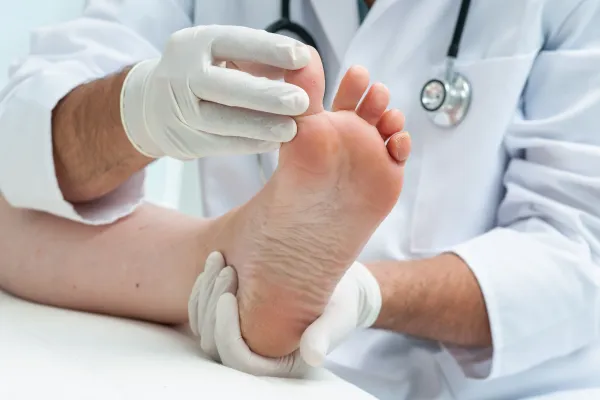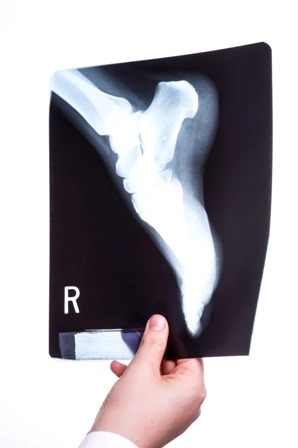Internal Medicine Coding Alert
Nail Debridement or Biopsy? These Clues Lead the Way

Remember, you might also report both procedures together.
When your provider debrides or excises a nail, you must know your code choices along with understanding when to report a debridement and when to report a biopsy.
Figure Out When to Report Debridement, Biopsy
If your clinician performs removal of excessive nail structure for reducing the thickness of the nail or to correct excessive curvature of a diseased or dystrophic nail, you report the appropriate debridement code based on the number of nails that were debrided. When your clinician performs debridement of the nail, he will not routinely send the removed part of the nail to the lab for any further evaluation.
Debridement of the nail is typically reported with one of two codes:
- 11720 (Debridement of nail[s] by any method[s]; 1 to 5)
- 11721 (…6 or more).
On the other hand, if your clinician removed any part of the nail including the nail plate, matrix, or the nail fold or performs removal of any part of the nail bed and sends the removed part of the nail for evaluation, then you report the biopsy code, 11755 (Biopsy of nail unit [e.g., plate, bed, matrix, hyponychium, proximal and lateral nail folds] [separate procedure]).
“One way to think about the difference is that debridement is done for therapeutic reasons, while biopsy is done for diagnostic purposes,” observes Kent Moore, senior strategist for physician payment at the American Academy of Family Physicians. “The documentation written by the surgeon/physician should point your in the right direction of the debridement vs. biopsy,” says Suzan (Berman) Hauptman, MPM, CPC, CEMC, CEDC, senior principal of ACE Med, a medical auditing, coding and education organization in Pittsburgh, Pa.
But, you need to be aware that there is some controversy regarding the use of code 11755 for a biopsy of the actual nail itself. You must not use this code when simply clipping a loose or crumbling portion of nail for KOH or DTM testing of the nail. From a CPT® perspective, you do not report code 11755 when obtaining nail clippings or nail bed scrapings for purposes of performing a fungal culture, KOH preparation, stain or test, or PAS stain. “These activities are part of an evaluation and management visit involving the medical management of the nail condition,” Moore says. “When medically appropriate, nail trimming (11719) and/or nail debridement services should be indicated with the specific codes, rather than 11755.”
“It’s also important to be aware that the descriptor for 11755 includes the parenthetical phrase, ‘separate procedure,’” Moore says. “That means, if it is done in conjunction with a more extensive procedure, it is not separately reportable. For example, if the avulsed area of a nail plate is removed and reported with 11730 (Avulsion of nail plate, partial or complete, simple; single) and the specimen is sent to pathology, then it is not appropriate to report 11755 for the biopsy of that avulsed specimen.”
Keep in mind that there are specific instances when a more definitive diagnosis is necessary and one needs a PAS stain. In these cases, the physician will remove a larger and more proximal piece of nail. Clearly document why such a definitive test is required as opposed to other types of fungal nail testing.
Check with the specific payer regarding their rules for documentation of onychomycosis or tinea. Routinely performing nail biopsies as a means of obtaining a fungal specimen is of questionable medical necessity and may result in audits.
Know the Correct Units of the Code to be Reported
When your clinician performs debridement of the nails, you have two codes choices to report from depending on the number of nails that were debrided. If your clinician performed debridement of one to five nails, report 11720. If more than five were debrided, report 11721. You do not have to report 11720 for the debridement of the first ‘five’ nails and then report 11721 for the debridement of the other nails. You just have to report 11721 if your clinician debrided six or more nails.
When your clinician performs a biopsy of any part of one nail unit, you only report 11755. If your clinician performed the biopsy in two different nails, then you can report 11755 more than once. However, you will need to report an appropriate modifier to the additional unit of 11755. If the procedure is performed on nails on the right and left foot, then you can use RT (Right side [used to identify procedures performed on the right side of the body]) and LT (Left side [used to identify procedures performed on the left side of the body]) modifiers to differentiate the sites. Or you use the modifier 59 (Distinct procedural service) to distinguish the two biopsies and let the payer know that two separate biopsies were performed.
Learn if Same Session Biopsy and Debridement Can be Reported
Although you might not commonly see situations wherein your clinician might perform same session biopsy and debridement of different nails, you can report both the debridement code and the biopsy code if such a situation arises. If you try reporting a biopsy of the nail unit and a debridement code together, you will face bundling edits according to Correct Coding Initiative (CCI) edits.
The modifier indicator for the bundling edits between biopsy code, 11755 and debridement code, 11720 is ‘1,’ which means that you can unbundle the codes and report them separately if you append an appropriate modifier. In this code bundling, 11755 is the column two code. So, you will need to append a suitable modifier, such as 59, to the biopsy code if you are planning on reporting the biopsy and the debridement codes together.
Related Articles
Internal Medicine Coding Alert
- MACRA:
Check Out These Pros, Cons of Early MIPS Adoption
‘Pick your pace’ options available for 2017. If you have been thinking about the Medicare [...] - E/M Coding:
Use These Tips to Grasp TCM Reporting
One-month embargo lifted on TCM codes. When your clinician provides follow-up care for a patient [...] - CPT® Coding:
Nail Debridement or Biopsy? These Clues Lead the Way
Remember, you might also report both procedures together. When your provider debrides or excises a [...] - You Be the Coder:
Additional Aerosol Treatments Deserve Separate Pay? Find Out
Question: If our physician performed nebulizer treatment to help control wheezing symptoms in a patient and [...] - Reader Question:
Look Toward J Code for Wheezing Dx
Question: I am new to coding. Our clinician recently came up with the diagnosis of ‘wheezing.’ [...]




